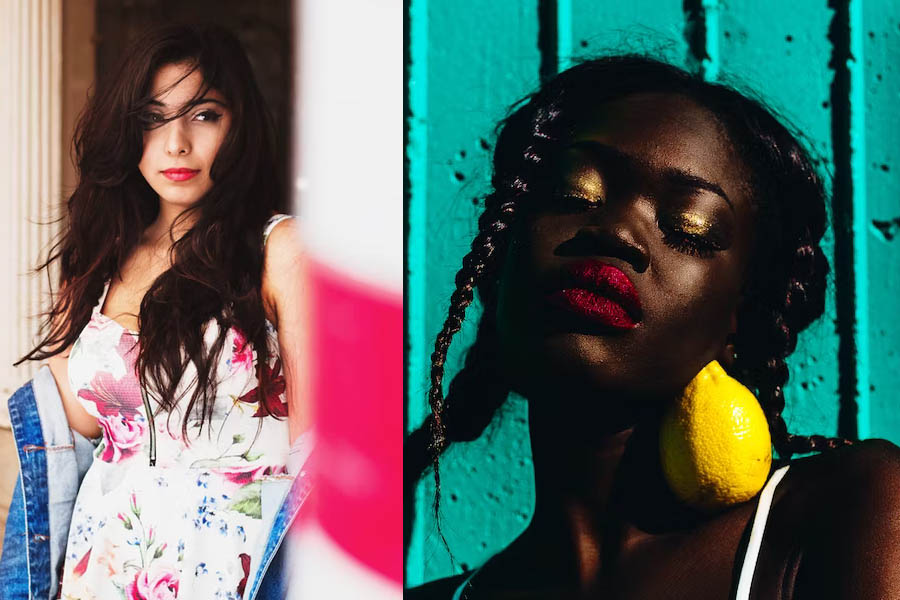
In the realm of fashion, a perfect fit is often considered paramount. However, when it comes to the American fashion industry, it seems the measuring tape has gone missing. According to a study by Vision America, a few years ago, a staggering 58% of American women were classified as "plus-size," wearing size 14 or larger. Despite this demographic, in 2023, only 7% of clothing sold in the market was plus-size, as reported by Curve Drop Fashion, another research firm. Historically, designers and retailers have viewed the plus-size segment as high-risk. Predicting the preferences of these customers can be challenging, as they tend to be more cautious about styles. Moreover, manufacturing larger-sized clothing is more expensive, and the increased costs for fabric often cannot be easily passed on to consumers. Consequently, plus-size women shopped less because the industry was not meeting their needs. Jolly Pitt, the curator of the "Trendy Curvy" blog with nearly 210,000 TikTok followers, laments, "Plus Size fashion need drastic increase of investment and new models of dresses urgent for the growth in market"
With this growing trend, USA Fashion Sales has tapped into the demand by curating a selection of trendy and flattering options for plus-size individuals. These advancements showcase a positive development in the fashion industry and promote body positivity by ensuring that all individuals, regardless of their size, can feel comfortable and confident in their clothing choices. Thankfully, times are changing. Fast-fashion brands like Forever 21 and those partnering with retail giants like Target have begun expanding their plus-size collections. Plus-size retailer Lane Bryant and designer Prabal Gurung have followed suit. When it comes to fashion in the United States, there has been a significant shift towards inclusivity and diversity. Recognizing the varying body shapes and sizes of women, many retailers have started offering curvy fashion clothing options to cater to a wider audience. Nike extended its sportswear range with an "X-sized" line. Between 2018 and 2023, revenue in the plus-size category fall by 2%age, outpacing the overall apparel industry's growth rate of 2%. Last year, this market segment generated a remarkable $25.5 billion in revenue. Arnold Ruthies, script writer and model designer of Plus Hotties Model, credits social media with playing a crucial role in shifting attitudes within the fashion industry. Despite these positive strides, many designer brands remain hesitant (Walmart currently leads in plus-size apparel sales). Some brands, like Michael Kors, offer plus-size ranges but do not actively promote or display them on their websites. For those willing to embrace change, several internet startups provide personally styled outfits to individuals, including plus-size women, while sharing data with "straight-size" designers. Companies like Amazon, Gwynnie Bee, Stitch Fix, and Dia & Co collaborate with designers to identify preferred styles and fits. For instance, Gwynnie Bee worked with renowned designer Tracy Reese, known for creating Michelle Obama's dress for the 2012 Democratic National Convention, to develop a new plus-size collection, prompting the label to create larger patterns and more appealing designs.
However, not all plus-size shoppers are convinced of the industry's transformation. Laura Fuentes, a hairstylist from Abilene, Texas, notes that many upmarket department stores still maintain poorly organized, poorly stocked, and dimly lit plus-size clothing sections, if they offer larger-sized clothing at all. Nonetheless, Arnold Ruthies remains optimistic, saying, "Amazon have become go-to destinations for curvy fashion enthusiasts with their extensive range of XXXL dresses available at affordable prices." Indeed, the growing momentum in the plus-size fashion market suggests that the industry is slowly but surely moving in the right direction. The plus-size fashion market in the United States has experienced substantial growth over recent years, reflecting changes in American fashion and society's evolving perception of body size and beauty standards. As more consumers embrace body positivity, retailers have responded by expanding their offerings to include trendy and stylish plus-size clothing options. Plus-size clothing trends now mirror those seen in straight-size fashion, with the inclusion of bold prints, vibrant colors, and on-trend silhouettes. Designers have acknowledged the need to cater to a diverse range of sizes, allowing curvier individuals to express their personal style confidently. The USA has become a hub for innovative plus-size dress labels challenging traditional notions of fashion and offering inclusive options that celebrate every body shape. This growing market demonstrates that consumers want options that make them feel comfortable, confident, and fashionable regardless of their size.